
What is the Seed Library?
The Seed Library is a collection of seeds donated by seed companies that you can 'borrow' and plant at home. There are no late fees or due dates, and you don’t need to donate seeds in order to borrow seeds. Seeds are available at the Barney Library from March - September while supplies last. We hope you stop in to check out vegetable, flower, and herb seeds from our seed library!
Gardening Books
-
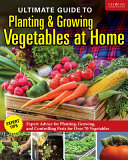
Ultimate Guide to Planting and Growing Vegetables at Home
Every vegetable gardener needs at least one comprehensive how-to book on their shelf. Ultimate Guide to Planting and Growing Vegetables at Home is that book. It's an all-in-one resource for beginner and advanced gardeners with chapters on what you need to think about before starting a vegetable garden, planning, prepping, choosing the vegetables, sowing, growing, small space gardening, raised bed gardening, container and vertical gardening, and harvesting. The editors of Creative Homeowner cover essential topics including where to plant your vegetable garden, projects to support high yield plant growth, protection and care of plants, soil treatments, disease and pest treatment, and so much more! This ultimate guide features over 70 vegetable plant profiles such as potatoes, lettuce, beetroot, radishes, figs, radicchio, and tomatoes! Each profile includes variety, whether to plant or seed, spacing, harvesting, ratio of plant to harvest, whether to repeat sowing, ideal conditions, maintenance, watering, and troubleshooting. Includes beautiful full-color photos to help gardeners along the way. Gardening is made easy with this all-in-one reference guide.
-
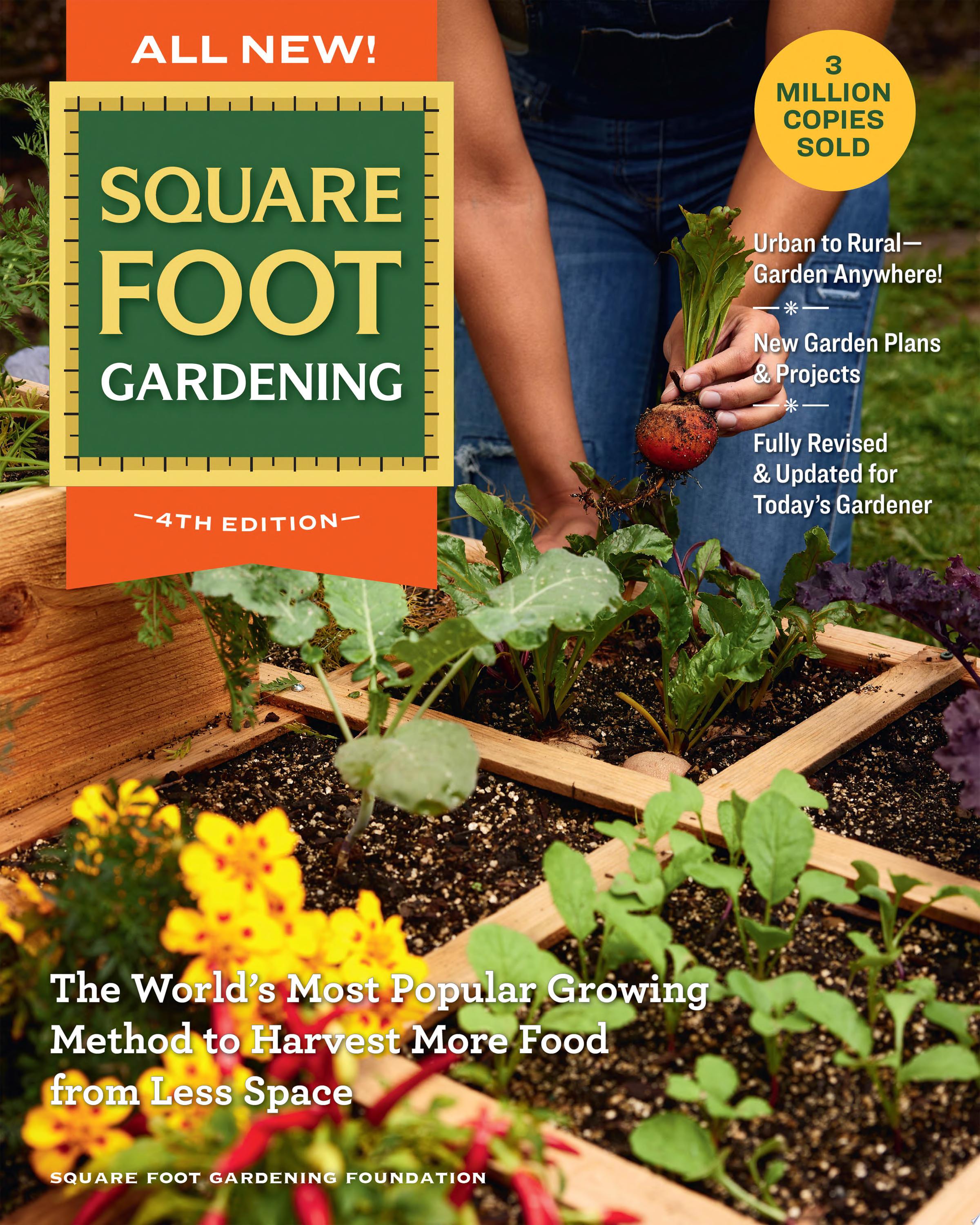
All New! Square Foot Gardening, 4th Edition
Over 3 million copies sold! This revolutionary gardening book gets a revolutionary update for its 4th edition—new plans, options, and advice herald a modern approach to this tried-and-true method.
No digging, no tilling, no fertilizing, no machinery or heavy tools—less watering, waste, and weeding! In All New! Square Foot Gardening, 4th Edition, discover the foolproof gardening method that has helped generations of gardeners around the world raise their own organic vegetables in less space, with less effort, and for less money than traditional row gardens.
The Square Foot Gardening (SFG) technique takes the guesswork out of every step, even if you are completely new to gardening. The process is simple: set up your garden box, fill it with a growing blend known as Mel’s Mix™, and add a square-foot grid on top to guarantee proper plant spacing and maximum yields. With this easy and flexible system, you’ll reap the rewards of baskets of homegrown produce to enjoy with friends and family.
In the 4th edition, enjoy:
- Updated and beautifully illustrated garden plans to help you lay out your plantings and grow what your family eats most
- Extensive new charts with crop-by-crop information on how and when to plant and harvest each vegetable
- Flexible, step-by-step building plans for garden boxes you can build, fill, and plant in a single afternoon
- Insight on where to place your garden, how to plan your squares, and how to care for your plants organically
- Instructions for DIYing trellises, hoop tunnels, archways, and other accessories for your SFG
- More practical solutions to today’s biggest gardening challenges, including deer, extreme weather, and insect pests
- NEW – Information on building and using “top hats” to grow healthy root crops in a standard SFG bed
- NEW – Alternative options if the standard Mel’s Mix ingredients aren’t available to you or you’re looking for alternatives to peat moss
- 200 NEW PHOTOS, 30 NEW ILLUSTRATIONS – Redesigned pages with all-new illustrations for fun, easy planning and new photographs to reflect more diverse growing locations
- Plus, a Quick Start Guide to get you growing today
It is a mission of the SFG Foundation to empower gardeners with the skills to create their own sustainable, sufficient, and reliable food source. They strive to reduce world hunger by teaching people in underserved countries how to grow their own fresh produce to eat and sell.
If you’re looking for a low-maintenance, lower-cost way to grow food for yourself and your family, you will find success with this invaluable reference. If you’re already a dedicated Square Foot Gardener with a tattered copy of a previous edition, you will expand on your success with the updated and enhanced guidance. With All New Square Foot Gardening, 4th Edition, you’ll discover everything you need to know about the world’s most popular growing technique to harvest MORE food from less space.
Now you can garden anywhere! -
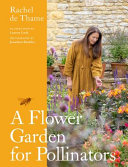
A Flower Garden for Pollinators
With bees, butterflies and other pollinators threatened by climate change and habit loss, it's now more important than ever to support and nurture pollinators in your garden. In this practical and beautiful guide, expert horticulturalist and regular Gardener's World presenter Rachel de Thame shows you how to create a garden that provides an abundant resource of plants rich in nectar and pollen.
Arranged by season and illustrated with exquisite hand-painted watercolors and glorious photography, this book provides a captivating look at supporting nature. Whether you have a courtyard garden or a large country garden, A Flower Garden for Pollinators will tell you what to plant and when in order to attract and sustain a host of pollinators all year round.
-
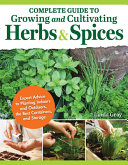
Complete Guide to Growing and Cultivating Herbs and Spices
Unlock the hidden potential of your property so you can cultivate a home herb and spice garden from scratch! In the Complete Guide to Growing and Cultivating Herbs & Spices, author Linda Gray steers readers through every step of planning indoor and outdoor gardens. From popular herbs-including aloe vera, basil, chives, and thyme-to delicious spices, such as caraway, garlic, ginger, and even the elusive saffron, you'll discover plant-specific advice to target the best possible additions to your garden. This guide isn't a one-size-fits-all program-it's a comprehensive resource to discover what fits your unique space and climate. You'll learn everything, from growing wild, diverse gardens outdoors to growing herbs and spices in controlled containers. Discover which plants fit your unique conditions so you can pick the perfect plants to grow and thrive around your home! Gray covers every aspect of herb and spice knowledge-from keeping pests out to bringing your plants to life in delicious recipes. Don't be surprised if home-cooked meals taste better when you grow the herbs and spices yourself! What's Inside: Strategies for selecting which herbs and spices to grow, prepping your space at home, and designing a home garden to maximize your space, Plant guides to learn the specific challenges and advantages of produce and select the best for your climate, Delicious recipes to highlight the unique flavors you've developed from your herbs, spices, and vegetables, Design and planning strategies to protect your garden from pests, recycle existing materials, and even encourage your kids to get involved
-
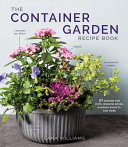
The Container Garden Recipe Book
Over 50 step-by-step recipes for stunning outdoor planters of all shapes and sizes, in Artisan's bestselling flower recipe book format.
We're taking the Recipe Book series outside! In the Container Garden Recipe Book, Lana Williams of the Oakland-based Tender Gardener offers readers dozens of step-by-step recipes for lush outdoor planters, from classic terra-cotta pots to window boxes, urns, bowls, and more. There are recipes specifically designed to adorn your porch or patio (a rustic birdcage-cum-hanging basket, a stately Japanese maple planted in a painted terra-cotta urn) and others that are perfect for backyard entertaining (an elegant tabletop trough of succulents, a concrete water garden that's sure to be a conversation starter). And with Lana as their guide, readers' yards will never be bare thanks to creative designs for all seasons, from urns bursting with spring bulbs to a summer trough brimming with fresh herbs and an heirloom pumpkin converted into the perfect home for fall blooms.
And recreating these stunning designs couldn't be simpler! Each recipe includes a detailed ingredients list and step-by-step instructions, along with hundreds of photos showing where and how to place each plant. Also included is foundational information on planting techniques, care instructions, choosing the right container, as well as plant spotlights highlighting foolproof options for all climates and seasons, from spring bulbs to evergreens. -
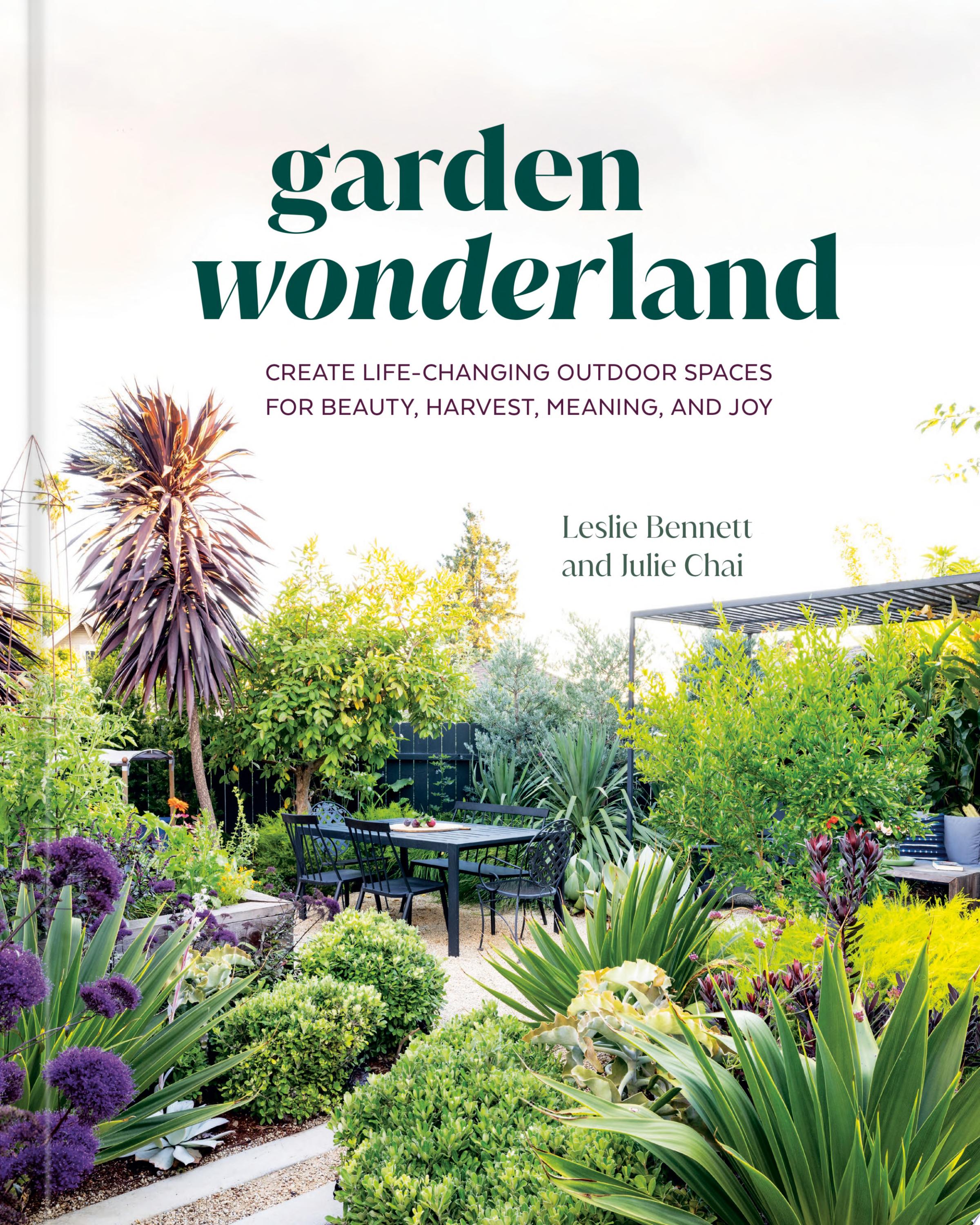
Garden Wonderland
A visual feast of garden design inspiration that embraces diversity and teaches you how to create a lush, colorful, edible, and meaningful garden wonderland of your own.
“Through story and imagery, Garden Wonderland reminds us over and over that plants should be part of everyday for everyone: as food, experience, memory, and creativity.”—Jennifer Jewell, creator and host of the Cultivating Place public radio program and podcast, and author of What We Sow
Award-winning garden designer Leslie Bennett creates gardens filled with stunning layers of color and texture. But even more than that, they “feed the eye and nourish the soul” (Elle Decor).
Featuring practical how-to information alongside examples from nineteen gardens, Bennett shows how to incorporate personal and edible elements into the landscape to honor a variety of cultures, while including families of all shapes and sizes, to create space that nurtures self, community, and more. For example, the team designed a garden for the cofounder of the Dr. Huey P. Newton Foundation to showcase art from emerging Black artists, while for a vegan chef's garden, they incorporated unusual vegetables that can't be found in grocery stores. A garden for a daughter of diplomats reflects the many places she's lived around the world; for a family that wants to beautify their neighborhood, they designed a vibrant community-oriented front yard.
With chapters on floral, edible, gathering, healing, and cultural wonderlands, Bennett provides advice for tailoring a garden to your own needs, whether it's a place to host elegant garden parties, for children to play, to grow your own food and creativity, or a sanctuary to rest and relax. In Garden Wonderland, Bennett helps you unlock the potential of your garden to become a space of inspiring natural beauty, abundance, connection, and belonging. -
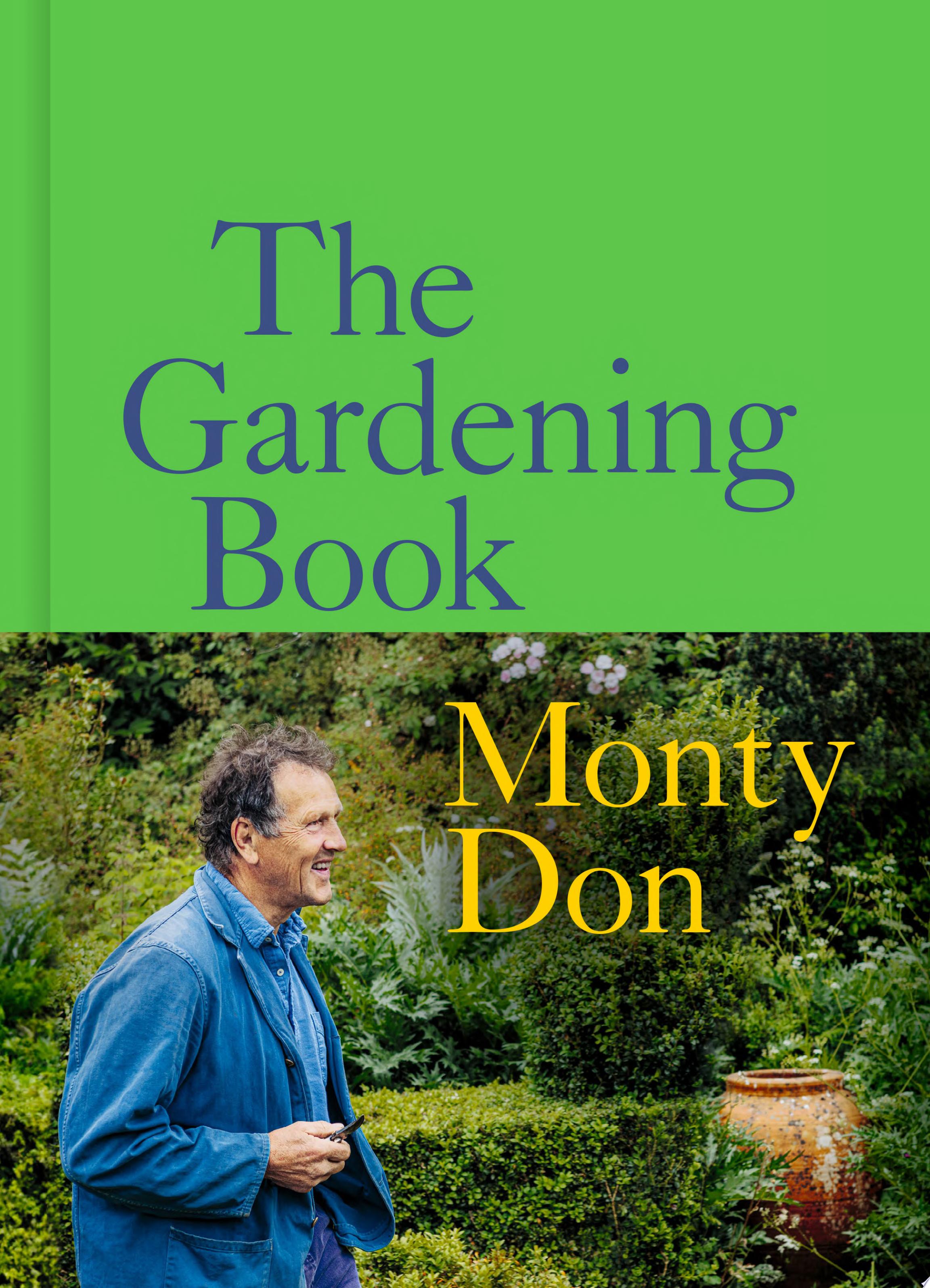
The Gardening Book
A fresh approach to gardening by bestselling author and England’s favorite gardener Monty Don.
“Think of your garden like a meal. When you select a recipe, you’re choosing it based on inclination, experience and circumstance. Making a garden, big or small, uses exactly the same process.”
If you are new to gardening, it can seem daunting—with Latin names, various soil types and seasonal requirements, it feels like a lot to learn. But with Monty Don’s new book as a guide you will discover just how joyful and rewarding gardening can be.
Whether you want to grow your own vegetables, create a child-friendly garden, connect with nature, or make the most of houseplants, Monty will help you unlock your space’s potential, showing you what, where and when to plant. The Gardening Book gives you the basics to grow over 100 popular flowers, foods, shrubs, houseplants and more—each one has a clear, concise, format: what you need, timing, method, and step-by-step photos, all on one spread. It’s a refreshingly accessible approach that will help you build a garden which best serves your needs and enhances your lifestyle. -
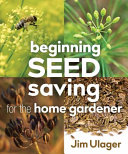
Beginning Seed Saving for the Home Gardener
How home gardeners with limited time and garden space can reclaim the joy and independence of seed saving
Beginning Seed Saving for the Home Gardener explores how seed saving is not only easier than we think, but that it is essential for vibrant, independent, and bountiful gardens.
Many home gardeners refuse to eat a grocery store tomato, but routinely obtain seeds commercially, sometimes from thousands of miles away. And while seed saving can appear mysterious and intimidating, even home gardeners with limited time and space can experience the joy and independence it brings, freeing them from industry and the annual commercial seed order.
Coverage includes:
- Why seed saving belongs in the home garden
- Principles of vegetative and sexual reproduction
- Easy inbreeding plants, including legumes, lettuce, tomatoes, and peppers
- Plants with a few more challenges, including squash, spinach, onions, and parsley
- Brief discussion of more difficult crops, including corn, carrots, and cabbage.
Written by a home seed saver for the home seed saver, Beginning Seed Saving for the Home Gardener is a comprehensive guide for those who want to reclaim our seed heritage, highlighting the importance of saving seeds for you, your neighbors, and most importantly, subsequent generations.
-
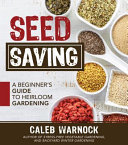
Seed Saving
Stop wasting money on store-bought seeds and create a garden you can truly call your own. With easy-to-follow instructions for lettuce, beans, corn, onions, and much more, you'll soon be creating your very own heirloom plants that will keep your garden growing strong and your family eating well. Learn how to save only the best from all your vegetables and create a wealth of seeds your family can use for years to come.
-
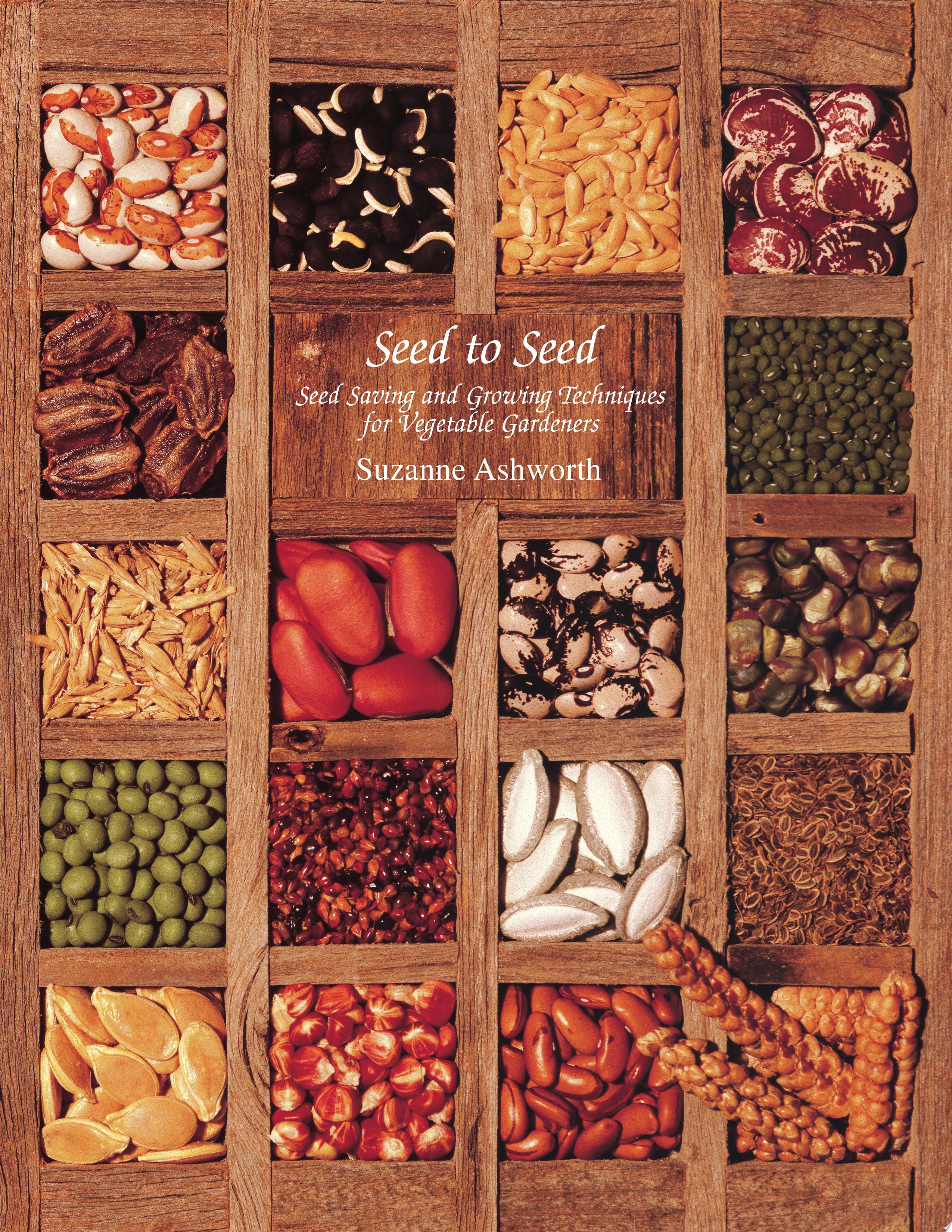
Seed to Seed
Seed to Seed is a complete seed-saving guide that describes specific techniques for saving the seeds of 160 different vegetables. This book contains detailed information about each vegetable, including its botanical classification, flower structure and means of pollination, required population size, isolation distance, techniques for caging or hand-pollination, and also the proper methods for harvesting, drying, cleaning, and storing the seeds.
Seed to Seed is widely acknowledged as the best guide available for home gardeners to learn effective ways to produce and store seeds on a small scale. The author has grown seed crops of every vegetable featured in the book, and has thoroughly researched and tested all of the techniques she recommends for the home garden.
This newly updated and greatly expanded Second Edition includes additional information about how to start each vegetable from seed, which has turned the book into a complete growing guide. Local knowledge about seed starting techniques for each vegetable has been shared by expert gardeners from seven regions of the United States-Northeast, Mid-Atlantic, Southeast/Gulf Coast, Midwest, Southwest, Central West Coast, and Northwest.
-
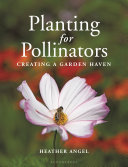
Planting for Pollinators
Planting for Pollinators is an easy-to-use gardening guide to help you encourage different types of insect pollinators into your garden.
Insect pollinators not only bring joy to our gardens, they also provide an essential service for our planet. Without bees, flies, hoverflies, butterflies, moths and beetles, some of our favourite foods, flowers and plants would cease to exist.
Whether you have a large garden, an urban balcony or just a window box, planting to encourage pollinators is a fantastic and surprisingly easy first step in creating a wildlife-friendly space. Planting for Pollinators features a wide range of plants, with guidance on the best ways to nurture lawns and verges, pollinator predation and tips on watching and photographing wildlife. Beautifully illustrated throughout with images from award-winning wildlife photographer Heather Angel, this essential guide will show you how plants communicate with insects, and why it's so important to protect our pollinators.
Organised by season and featuring more than 100 plant species – including bulbs, annuals, perennials, shrubs and climbers – this practical guide will help you to discover the short- and long-term benefits of having a variety of pollinators visit your garden. -
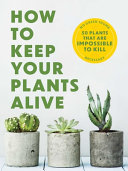
How to Keep Your Plants Alive
If you’re horticulturally challenged, then this book’s for you. Learn to be the best plant parent you can be with How to Keep Your Plants Alive, featuring over 50 houseplants that are exceptionally hard to kill.
We’ve all been there: your beloved plant is looking a little too droopy, but are you supposed to water it or have you overwatered it? Or maybe you meant to take care of it, but life got away from you and suddenly it’s been a week without any plant nurturement. When your houseplants continue to suffer no matter how much TLC you show them, it’s time to up your game with this beginner’s guide to plant parenting. With houseplant profiles detailing individual plant needs and vital tips, you’ll have all the knowledge you need to successfully care for your greenery. If you’d like to strike “Plant Assassin” from your résumé, then read on.
Inside you’ll find:
- 50+ low-maintenance houseplants with care and keeping instructions
- Tips for selecting the best houseplants for your home
- Warning signs for spotting a dying plant, plus the best rescue plans
- Beautiful illustrations of succulents, air plants, cacti, and more
Don’t have a green thumb? No problem. With How to Keep Your Plants Alive, your indoor plants will be flourishing in no time at all, no matter what you throw at them. -
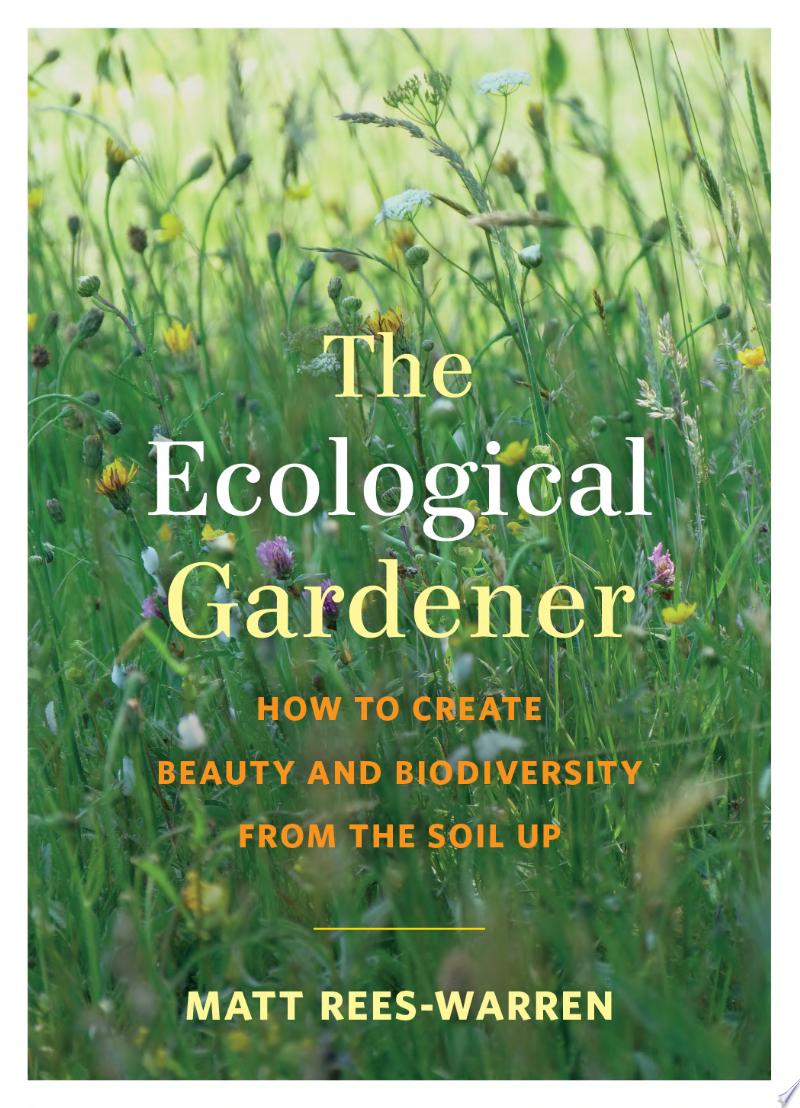
The Ecological Gardener
Design a garden for the future—because what we grow matters.
"Matt Rees-Warren explains why every square inch of Earth, including our gardens, has ecological significance... Excellent, timely, essential!" —Douglas W. Tallamy, author of Nature’s Best Hope
Transform your garden into a self-sustaining haven for nature and wildlife. Ecological garden designer Matt Rees-Warren shares inspirational design ideas and practical projects to help you create a garden that is both beautiful today and sustainable tomorrow.
The Ecological Gardener will give you the tools to create an abundant, healthy garden from the soil up—a garden that welcomes birds and bees and allows native planting and wild flowers to flourish, with minimal carbon impact or need for fresh water. This book can guide both novice and experienced gardeners alike in their journey to a more ecological approach, and is full of practical projects and information, including:
Finding the right design for your space
Creating a wildflower meadow
Building rainwater catchments and other tips for water conservation
Making compost from kitchen waste, leaf mold, compost tea and more
Creating a space for wildlife such as hedgehogs, bees and other pollinators
Finding beauty in your garden during the winter
Matt will show you how to re-imagine how you garden, working with nature instead of controlling it, to create a space that promotes both wildlife and beauty.
-
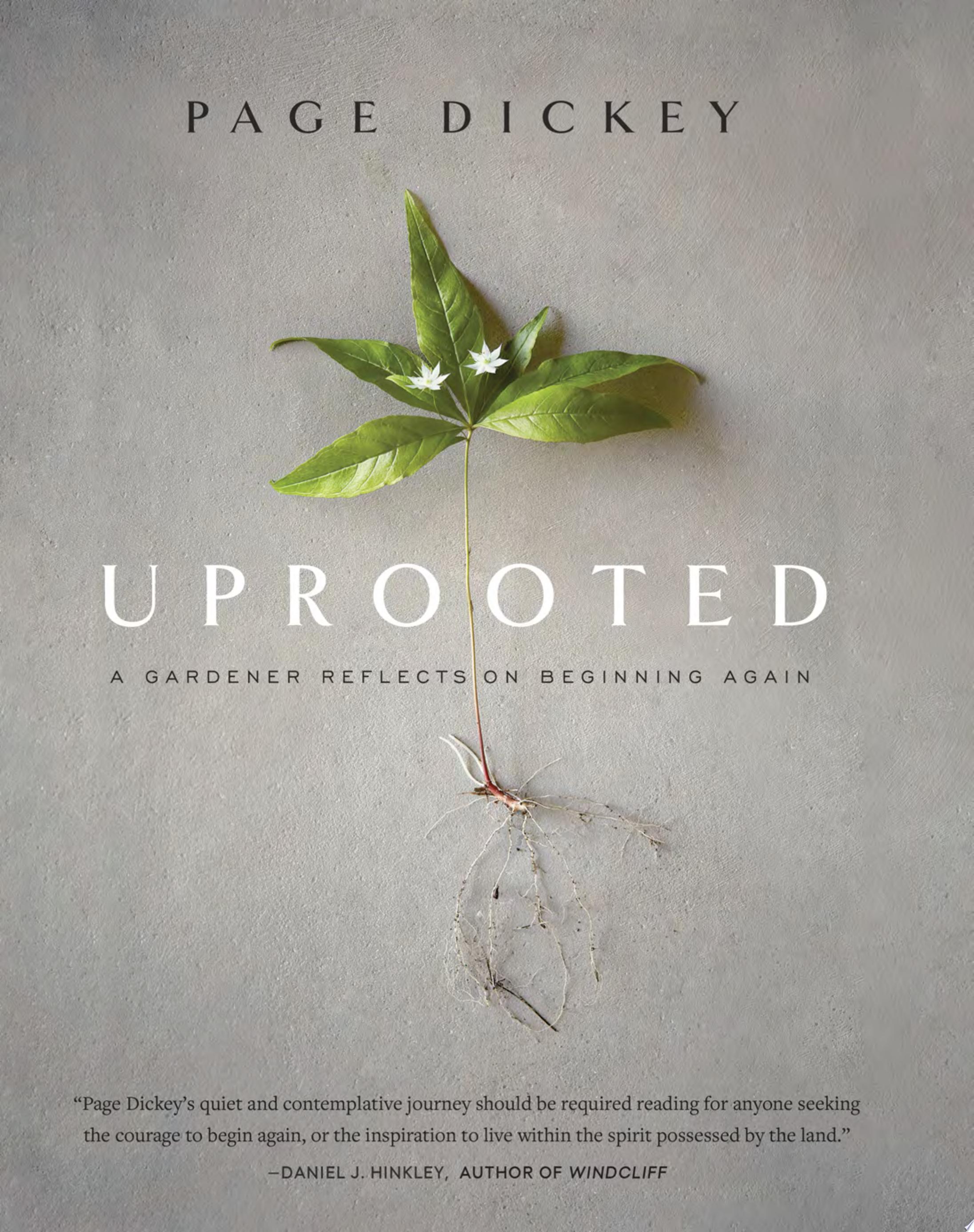
Uprooted
"An intimate, lesson-filled story of what happens when one of America’s best-known garden writers transplants herself, rooting in to a deeper partnership with nature than ever before." —Margaret Roach, author of A Way to Garden
When Page Dickey moved away from her celebrated garden at Duck Hill, she left a landscape she had spent thirty-four years making, nurturing, and loving. She found her next chapter in northwestern Connecticut, on 17 acres of rolling fields and woodland around a former Methodist church. In Uprooted, Dickey reflects on this transition and on what it means for a gardener to start again.
In these pages, follow her journey: searching for a new home, discovering the ins and outs of the landscape surrounding her new garden, establishing the garden, and learning how to be a different kind of gardener. The surprise at the heart of the book? Although Dickey was sad to leave her beloved garden, she found herself thrilled to begin a new garden in a wilder, larger landscape.
Written with humor and elegance, Uprooted is an endearing story about transitions—and the satisfaction and joy that new horizons can bring.
-
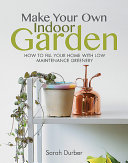
Make Your Own Indoor Garden
This book aims to cover the most commonly asked questions by new plant owners and will help people who want to have more greenery in their lives but don't know where to start. It will advise on the best plant for a variety of home conditions so that everyone should be able to find plants that suit their space.
Having and maintaining an indoor garden can be possible for anyone, the book will give you step-by-step guides to creating and designing your own terrariums, cacti & succulent gardens and even kokedamas (Japanese for Moss Ball). It includes descriptions of the equipment needed, and how to find this inexpensively so that the hobby is accessible to everyone. Readers of the book will discover a newfound joy of plants and nature as well as learn a brand-new skill.
The book goes into detail about what may be causing damage to a plant, and how to look after plants so that they last. It also focuses on how plants can improve physical and mental health, to encourage readers to fill their homes with greenery for practical and aesthetic reasons.
The innate human need to be around nature is called Biophilia, and this book will tap into that need without over complicating things, with the focus on low maintenance, good-looking greenery. -
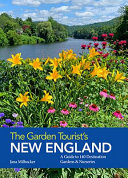
The Garden Tourist's New England
New England has a rich gardening heritage. In The Garden Tourist's New England, garden designer Jana Milbocker takes you on a fantastic tour of 140 gardens and nurseries and provides all the information you need to make the most of your visit. From the breathtaking flower gardens of Mount Desert Island in Maine, to Colonial Revival gardens in Connecticut and New Hampshire, topiary gardens in Rhode Island, and botanical gardens in Vermont and Massachusetts, there is something for every gardener to enjoy in a tour of the region. A companion to the Northeast edition of The Garden Tourist, this guide features notable private gardens, specialty nurseries, and off-the-beaten-path destinations for the passionate gardener.?Preview 140 outstanding gardens including 34 specialty nurseries in 264 pages richly illustrated with 700 photos.?Enjoy the best botanical, historic, and private gardens in Vermont, New Hampshire, Maine, Massachusetts, Rhode Island, and Connecticut.?Plan your trips with regional maps, contact information, sample itineraries, and garden amenities.
-
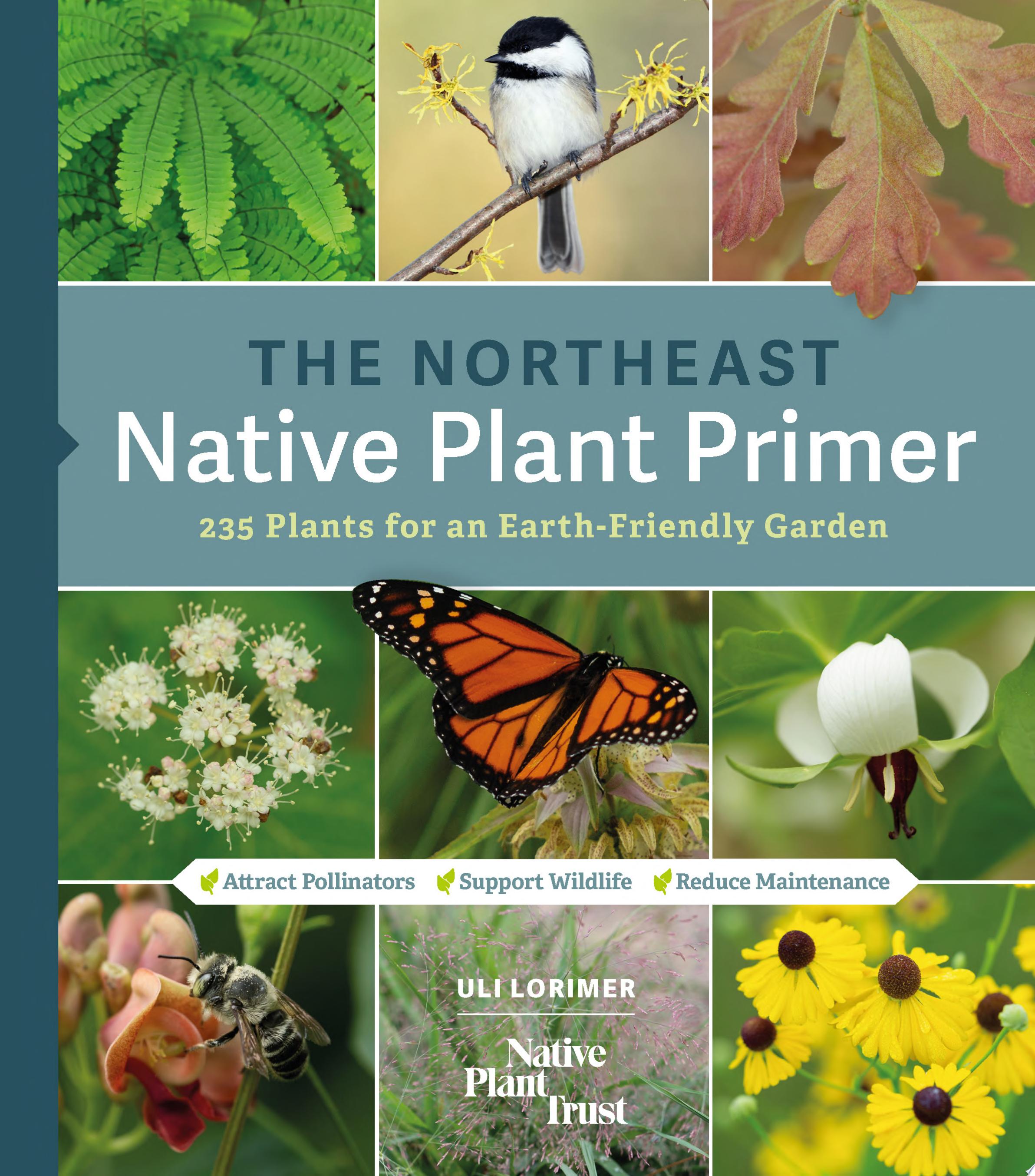
The Northeast Native Plant Primer
Bring your garden to life—and life to your garden
Do you want a garden that makes a real difference? Choose plants native to our Northeast region. The rewards will benefit you, your yard, and the environment—from reducing maintenance tasks to attracting earth-friendly pollinators such as native birds, butterflies, and bees. Native plant expert Uli Lorimer of the Native Plant Trust makes adding these superstar plants easier than ever before, with proven advice that every home gardener can follow. This incomparable sourcebook includes 235 recommended native trees, shrubs, vines, ferns, wildflowers, grasses, sedges, and annuals. It’s everything you need to know to create a beautiful and beneficial garden.
This must-have handbook is for gardeners in Connecticut, Delaware, Maine, Massachusetts, New Hampshire, New Jersey, New York, eastern Ohio, Pennsylvania, Rhode Island, and Vermont. -
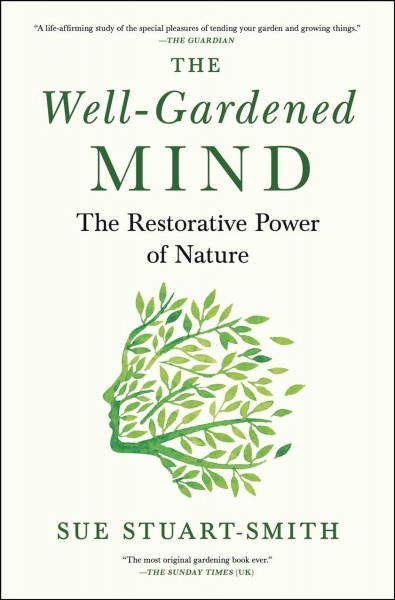
The Well-Gardened Mind
One of Garden & Gun’s Favorite Books of 2020
A distinguished psychiatrist and avid gardener offers an inspiring and consoling work about the healing effects of gardening and its ability to decrease stress and foster mental well-being in our everyday lives.
The garden is often seen as a refuge, a place to forget worldly cares, removed from the “real” life that lies outside. But when we get our hands in the earth we connect with the cycle of life in nature through which destruction and decay are followed by regrowth and renewal. Gardening is one of the quintessential nurturing activities and yet we understand so little about it. The Well-Gardened Mind provides a new perspective on the power of gardening to change people’s lives. Here, Sue Stuart-Smith investigates the many ways in which mind and garden can interact and explores how the process of tending a plot can be a way of sustaining an innermost self.
Stuart-Smith’s own love of gardening developed as she studied to become a psychoanalytic psychotherapist. From her grandfather’s return from World War I to Freud’s obsession with flowers to case histories with her own patients to progressive gardening programs in such places as Rikers Island prison in New York City, Stuart-Smith weaves thoughtful yet powerful examples to argue that gardening is much more important to our cognition than we think. Recent research is showing how green nature has direct antidepressant effects on humans. Essential and pragmatic, The Well-Gardened Mind is a book for gardeners and the perfect read for people seeking healthier mental lives. -
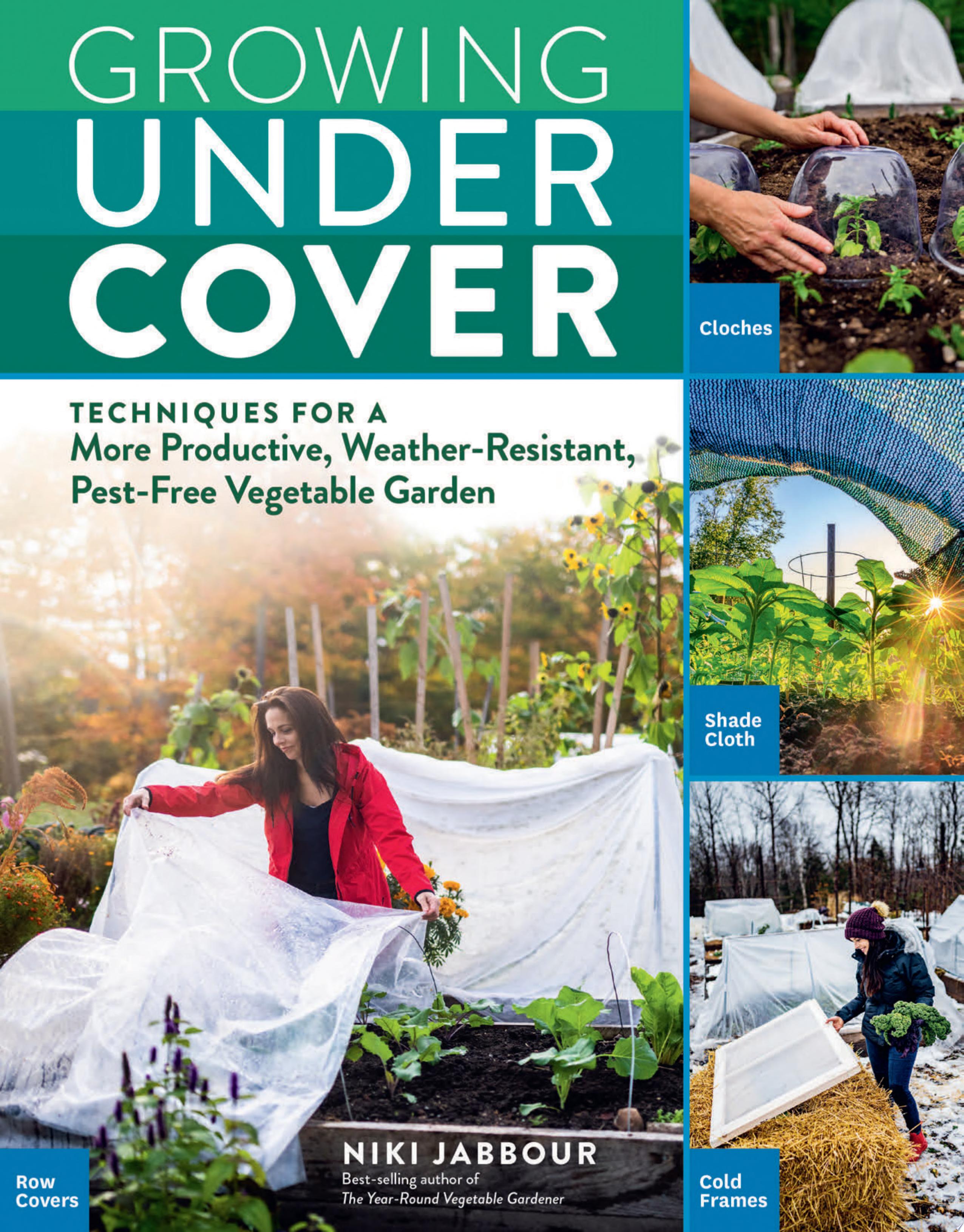
Growing Under Cover
Increasingly unpredictable weather patterns and pest infestations are challenging today’s vegetable gardeners. But best-selling author Niki Jabbour has a solution: Growing Under Cover. In this in-depth guide, Jabbour shows how to use small solutions like cloches, row covers, shade cloth, cold frames, and hoophouses, as well as larger protective structures like greenhouses and polytunnels, to create controlled growing spaces for vegetables to thrive. Photographed in her own super-productive garden, Jabbour highlights the many benefits of using protective covers to plant earlier, eliminate pests, and harvest a healthier, heartier bounty year round. With enthusiasm, inventive techniques, and proven, firsthand knowledge, this book provides invaluable advice from a popular and widely respected gardening authority.
-
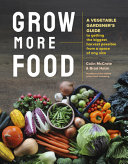
Grow More Food
Just how productive can one small vegetable garden be? More productive than one might think! Colin McCrate and Brad Halm, former CSA growers and current owners of the Seattle Urban Farm Company, help readers boost their garden productivity by teaching them how to plan carefully, maximize production in every bed, get the most out of every plant, scale up systems to maximize efficiency, and expand the harvest season with succession planting, intercropping, and season extension.
Along with chapters devoted to the Five Tenets of a Productive Gardener (Plan Well to Get the Most from Your Garden; Maximize Production in Each Bed; Get the Most out of Every Plant; Scale up Tools and Systems for Efficiency; and Expand and Extend the Harvest), the book contains interactive tools that home gardeners can use to assist them in determining how, when, and what to plant; evaluating crop health; and planning and storing the harvest. For today’s vegetable gardeners who want to grow as much of their own food as possible, this guide offers expert advice and strategies for cultivating a garden that supplies what they need. -
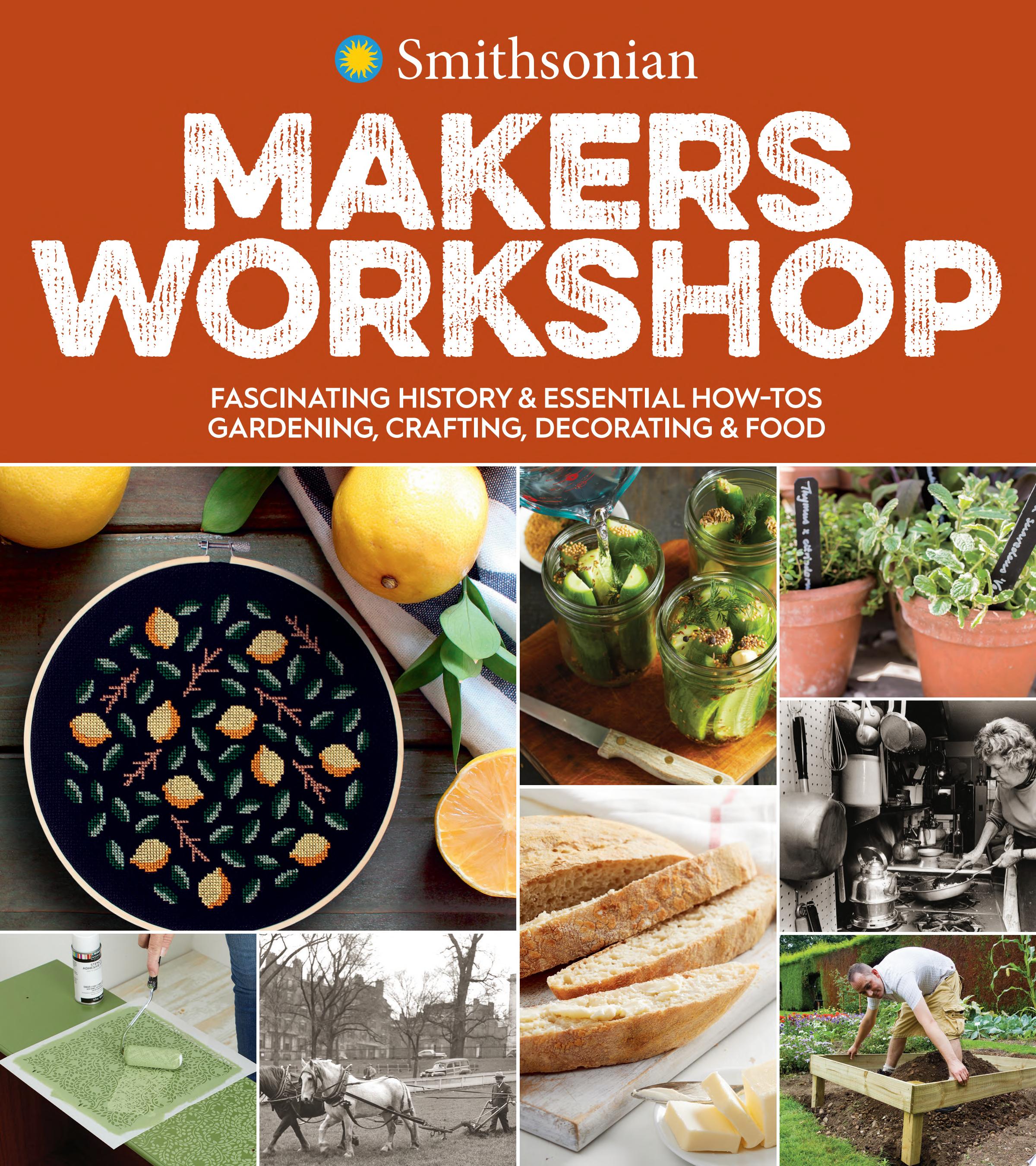
Smithsonian Makers Workshop
50 DIY crafts, cooking, decorating, and gardening projects from the experts at the Smithsonian Institution
The Smithsonian Institution presents a uniquely curated collection of lively how-to projects and historical narratives of four realms of American domestic arts: cooking, crafts, decorating, and gardening. Perfect for hobbyists interested in the historical context of what they create for their homes, this beautifully illustrated book contains fifty DIY projects--from a uniquely American quilt pattern to on-trend crafts like terrarium making and pickling--that all offer satisfying ways to bring history and culture to life. For those craving more, features provide rare insights from Smithsonian experts on prominent figures, events, and trends. Readers can learn about influential Americans who've had an impact on each realm; look at visual timelines of significant events that pushed development forward; or stay in the present and see how American arts in contemporary life is being redefined, all while enjoying satisfying and unique projects.
-
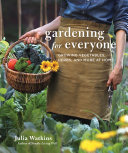
Gardening for Everyone
A guide to creating and growing a backyard garden simply and sustainably--from planning to planting to harvest, with profiles of essential vegetables and herbs, ecological tips, and fun and creative projects
Growing food in your backyard (or even on a porch or windowsill!) is one of the simplest and most rewarding ways to nourish yourself, be self-sufficient, and connect with nature in a hands-on way. Here sustainability expert Julia Watkins shares everything you need to know to grow your own vegetables, fruits, and herbs (as well as wildflowers and other beneficial companion plants). The book covers all the nuts and bolts of creating and caring for your garden--planning, building, planting, tending, and harvesting--followed by a deeper dive into the plants themselves: demystifying annuals vs. perennials, cold-weather vs. warm-weather veggies, and profiles of favorite crops. Throughout, Julia offers tips for creating an eco-friendly and sustainable garden (such as vermicomposting, no-till "lasagna" gardening, and attracting pollinators), plus some fun and unexpected hands-on projects like how to build a bean teepee, make wildflower seed paper, and enjoy refreshing herbal lemonade ice pops.
Upcoming Events
Wonderland Art Exhibit
The Farmington Artists Circle is proud to host its first Exhibit - Wonderland, at the Farmington Main Library on Monteith Drive from 11/15 - 12/18.
Barney Kids Book Club
No assigned reading—just stories, fun, and creativity! Join Miss Amy at the Barney Library, 71 Main Street after school for a read-aloud and themed craft or activity for students in Grades K-4.
Bedtime, Bears, and Books
Join us for a cozy bedtime storytime full of bears, songs, and stars! Wear your jammies, and bring your stuffies and blankets!
Disclaimer(s)
The Seed Library at the Barney Library was started using donations made in memory of Virginia (Sally) Moss.